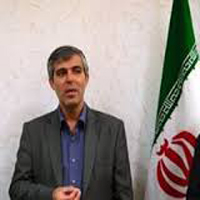Identifying and leveling the effective factors on the development of heritage sports tourism based on Interpretive Structural Modeling Approach (ISM)
Sport heritage is increasingly being recognized as a potent instigator of tourism. The convergence of heritage, sport and tourism involves many different and diverse fields, including sport tourism, heritage tourism, sport management.
The purpose of this study was to identify the effective factors on the development of heritage sports tourism with an interpretive structural modeling approach (ISM).
The present research is applied, qualitative and analytical in terms of nature and purpose, data retrieval, and data analysis method, respectively based on interpretive structural modeling. Data collection tools in this study were library studies, interview and questionnaire based on interpretive structural modeling. In order to identify the factors affecting the development of heritage sports tourism, with the collective agreement of experts and reviewing the research literature, 16 factors affecting the development of heritage sports tourism were identified.
According to the third step of the ISM method, the effective factors on the development of heritage sports tourism were classified into 7 levels and the political and governmental dimensions along with the rule of law were at the lowest level of the model (seventh level); these are prioritized in terms of implementation over other dimensions. As a result, officials and managers in the field of tourism and sports tourism should pay special attention to these dimensions in order to provide the ground for the emergence and realization of other dimensions at higher levels of the model. Finally, based on the analysis matrix of influence and dependence, it was determined that the political and governmental dimensions, rule of law, management and supportive factors are among the influence factors; economic dimensions, socio-cultural factors, infrastructure and welfare services, education and research, specialized human resources, technology, heritage sports tourism attractions, heritage, marketing and information and international relations are among the linking factors; and the dimensions of safety and security, complementary attractions and sporting events are among the dependent factors in this research.
According to the results of the model, for the development of heritage sports tourism, there must be a serious determination. In this regard, the policies of a nation must be progressive, and in the first step, government with a decisive role must provide the infrastructure.
- حق عضویت دریافتی صرف حمایت از نشریات عضو و نگهداری، تکمیل و توسعه مگیران میشود.
- پرداخت حق اشتراک و دانلود مقالات اجازه بازنشر آن در سایر رسانههای چاپی و دیجیتال را به کاربر نمیدهد.



